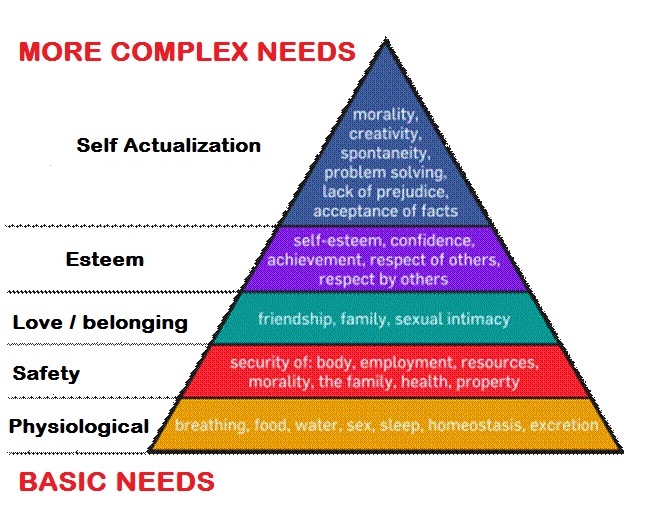
Maslow’s Hierarchy of Human Needs
THE DIVERSE HUMAN NEEDS
Through diverse environments and requirements for existence, human needs have been identified and classified in schemes of importance, or priority. The image below illustrates one of these descriptions of priority, as proposed by A. Maslow in his pyramid of the “hierarchy of human needs" (published in 1943 in A theory of human motivation. Psychological Review, 50(4), 370–96: http://en.wikipedia.org/wiki/Maslow%27s_hierarchy_of_needs.html ):

Maslow’s Hierarchy of Human Needs
We prioritize our needs in order to make sense of the world around us, think ahead, address these needs, adapt, survive, enjoy, grow and be happy in our environment, so the most basic, critical ones (e.g. Physiological, Safety, at the bottom of the pyramid figure above) would take precedence over the less critical ones (e.g. Self Actualization, Esteem, Love and belonging, at the top of the pyramid figure above). To satisfy our needs, we first have to access, and then make good use of the resources in the environment, and we do that best by creating and using increasingly wiser, more elaborate and helpful objects (tools) and technologies. Through time, we have made and used increasingly "smarter" objects and forces from the environment, and become more effective (produce the desired effects) and efficient (produce the effects with the least amount of resources spent, faster, and/or in safer ways) when satisfying our needs.